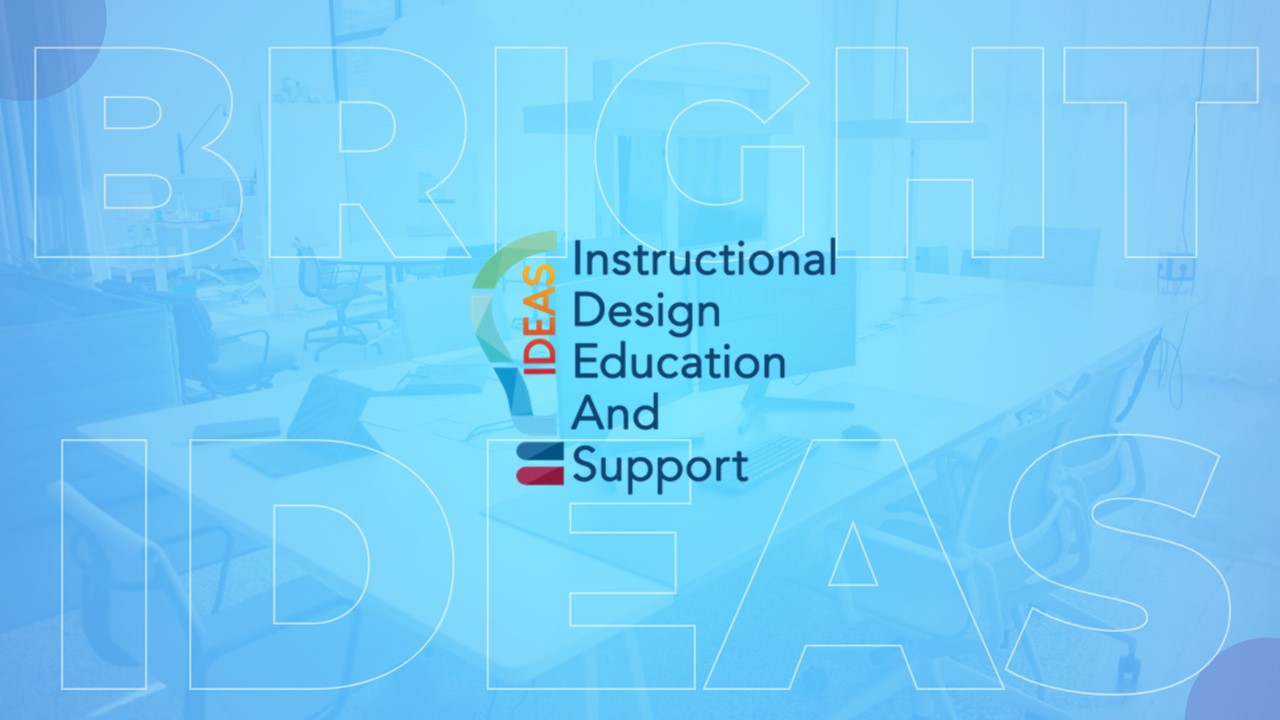“For feedback to have maximum effect, students have to be expected to use it to improve their work and, in many cases, taught how to do so.” –Saphier et al (2008)
Feedback is an essential part of teaching and learning, and we’re all familiar with the general guidelines – that it should be instructional, timely, individualized, and cordial. Effective feedback can reinforce existing strengths, keep goal-directed learning on course, clarify the effects of learning, and increase students’ abilities to detect and remedy errors on their own. With these goals in mind, how do we prepare students to locate, understand, and act on the feedback they receive?
Do they know where to find it?
Many of us have experienced the frustration of having provided highly individualized feedback on student assignments only to have it go unread or ignored. Are students intentionally wasting our time? Do they not care?
Possibly. But more likely, especially with online courses, they just aren’t aware that feedback exists or where to find it. For on-ground courses, locating feedback isn’t often an issue, but even letting students know to check the back page for your comments can help nudge them toward reviewing it. For online courses, you can send an email when you’ve graded the first assignment with a link to a tutorial on how to access the feedback, or you can include two quick links to the bottom of a “Welcome to the Course” email.
Handy Links to MyCourses Student Tutorials:
Do they know how to decipher it?
Another option for ensuring students view your feedback is to assign a reflection activity where you ask students questions about the feedback they received:
- How would you describe the content of the feedback in your own words?
- How does the feedback relate to the assignment guidelines?
- What questions do you have after viewing the feedback?
- Based on the feedback, what are your next steps?
An alternative activity is to have students review a sample graded paper with annotated feedback and ask them to respond (perhaps in groups or pairs) to questions like those listed above. In either activity, asking for student reflection also provides feedback on your feedback. From their responses, you can tell whether students understand the guidance or are just not getting it.
Do they know how not to take it personally?
Getting feedback that isn’t 100% positive can be difficult. Without a clear understanding that the feedback is intended to help support their learning, students can become defensive and unable to learn and grow from it. Fortunately, there are a couple of strategies we can use to help integrate feedback into our classes.
Communication is key for students to see feedback as a tool for learning. Explaining to students early on that you care about their learning progress and that annotations on their submitted work are intended to help them can go a long way toward creating a culture of continual improvement. Offering to speak to students one-on-one about your comments can too. In an online class, teacher presence puts the human back in online learning and can make a difference in how students perceive your feedback. In your introduction video, post, or welcome email, being personable makes it clear that you care about your students and that your feedback is intended to help them. These insights about your personality will help students take the tone of text-based feedback as it is intended.
Another strategy is to assign students to practice giving and receiving feedback. Peer-to-peer feedback activities can help students experience the process from both sides and better understand its application to learning. To lower the stakes, students can ask their reviewers two or three specific questions about the work that they will receive feedback on. And, including a minilesson about feedback similar to the advice given by the University of Waterloo’s Centre for Teaching and Learning would also provide students with a reference for such an essential life skill.
Do they know how to act on it?
After you’ve spent time and energy annotating student submissions or adding personalized comments to a rubric, it would be deflating if your students didn’t know what to do with the feedback. One way to ensure they know how to apply your feedback is to tell them. What you tell them, of course, will depend on your policies. You may allow for revision and resubmission; in that case, you can identify what is working and what changes can be made for improvement. Even with feedback on summative assessments, you can encourage students to continue building on their knowledge and improving their skills by visiting the tutoring center, exploring deeper information, or practicing on their own. One additional sentence or two encouraging next action steps in your feedback can move students toward deeper understanding and improved skillsets. Also, in a reflection activity, you could ask them to identify three specific actions they plan to take to improve their work based on the feedback they have received.
To see if students are applying your feedback with intention, you can ask them to include a cover sheet with their submissions reflecting on how they’ve applied feedback from previous assignments to the current one. You could also ask students to identify the feedback comments they found most useful and why. Their analysis of the comments can help them prioritize how to incorporate feedback.
Like learning, feedback is an ongoing process, and with an intentional dialogue students can be better prepared to connect feedback with performance, demonstrate understanding, and be more engaged.
Bibliography
Bowman, J. D. (2020, March 5). Getting students to engage with feedback. Edutopia. Retrieved October 02, 2022, from https://www.edutopia.org/article/getting-students-engage-feedback
Mulliner, & Tucker, M. (2017). Feedback on feedback practice: perceptions of students and academics. Assessment and Evaluation in Higher Education, 42(2), 266–288. https://doi.org/10.1080/02602938.2015.1103365
Murray, G. (2019). How to integrate effective feedback into your classroom. The Education Hub. Retrieved October 08, 2022, from https://theeducationhub.org.nz/how-to-integrate-effective-feedback-into-your-classroom/
Nicol, & Macfarlane-Dick, D. (2006). Formative assessment and self-regulated learning: a model and seven principles of good feedback practice. Studies in Higher Education, 31(2), 199–218. https://doi.org/10.1080/03075070600572090
Receiving and giving effective feedback. Centre for Teaching Excellence, University of Waterloo. (2020) Retrieved October 08, 2022, from https://uwaterloo.ca/centre-for-teaching-excellence/teaching-resources/teaching-tips/assessing-student-work/grading-and-feedback/receiving-and-giving-effective-feedback
Sackstein, S. (2016). Tips for teaching students to receive critical feedback. Education Week. https://www.edweek.org/teaching-learning/opinion-tips-for-teaching-students-to-receive-critical-feedback/2016/03
Saphier, J., Haley-Speca, M.A. and Gower, R. (2008) The Skillful teacher: Building Your Teaching Skills. 6th Edition, Research for Better Teaching, Inc.
Stone, D., & Heen, S. (2015). Thanks for the feedback: The art and science of receiving feedback well. Portfolio Penguin.
Feedback? IDEAS Event Feedback Form
Questions? IDEAS@SPCollege.edu




